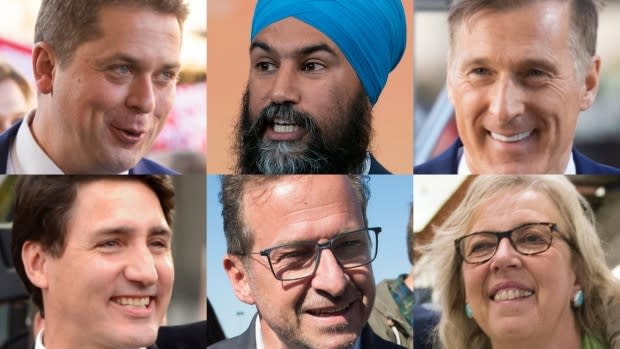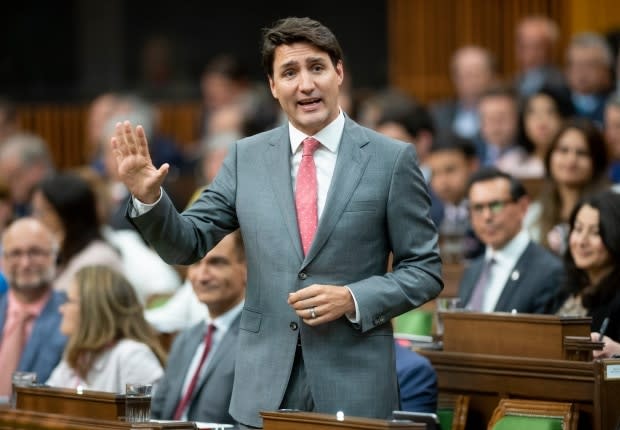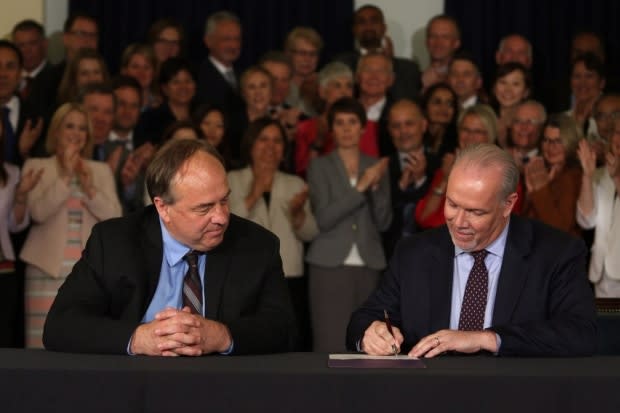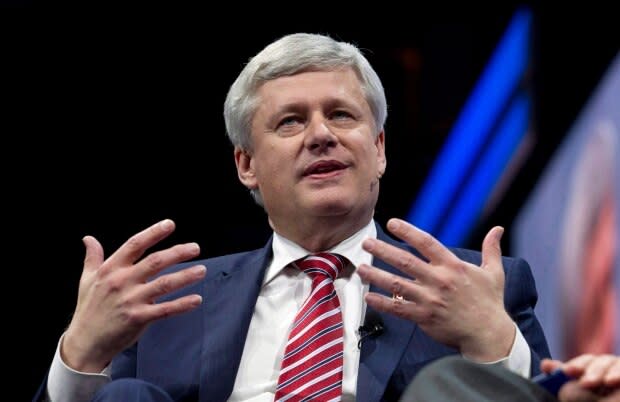How minority governments work — and what happens when they don't
The results of the federal election of 2019 should become more or less clear sometime after 10 p.m. ET Monday night, give or take a few recounts in particularly close races.
Typically, election nights end with a declaration that the party that won the most seats is the "winner."
But winning the most seats isn't always the same thing as winning the right to govern.
Whatever the result next Monday, the important thing to remember is this: holding power means holding the confidence of a majority of the members of the House of Commons.
That is the most basic fact of Canadian democracy. And with opinion polls showing a very close race, now is likely a good time to underline that fact.
In most elections, the result is relatively straightforward: one party wins a majority and the leader of that party gets to be prime minister.

As of this moment, Justin Trudeau is still the prime minister; though Parliament is dissolved when an election is called, the government remains in place. And Trudeau will remain the prime minister until he resigns, or is compelled to resign.
Obviously, if the Liberals win a majority of the country's 338 ridings, Trudeau continues as prime minister. That's simple enough.
If another party wins a majority, of course, the Liberal government ends, Trudeau almost certainly signals his intention to resign and preparations begin to swear in a new government.
Matters are slightly less straightforward if no party wins 170 or more ridings.
But, again, everything hinges on the question of who can command the confidence of the House.
The urgent speculation in recent days about possible coalitions is perhaps creating more confusion than clarity. But it does at least hint at the possibility that, where no party has a majority, a governing party will need the support of at least one other party to pass legislation.
A confidence game
For the sake of argument, let's say the result on Oct. 21 looks something like one recent projection: 137 seats for the Liberals, 135 for the Conservatives, 33 for the Bloc Québécois, 28 for the New Democrats, four for the Greens and Maxime Bernier winning a seat for the People's Party.
Trudeau, as the incumbent prime minister, has the authority to recall Parliament, present a speech from the throne and seek to win the confidence of the House of Commons. To do so, he would need the support of at least two parties; 137 Liberals plus 33 Bloc Québécois MPs and 28 New Democrats would, for instance, constitute a strong majority of the House.
But it's important to note that the same holds true even if the Conservatives win the most seats — if, for instance, the Conservatives win 137 seats and the Liberals win 135 seats.
In this scenario, as in the previous one, Trudeau could meet the House and seek to win the confidence of MPs. Again, his government would need the support of other parties. But with that support, it could continue to govern.
If the Liberals failed to win the confidence of the House, Trudeau would be left with two options: resign or ask the Governor General for a new election.

In either case, the Governor General would have the discretion to invite someone else — Andrew Scheer, for instance — to form a government. If that government also failed to win the confidence of the House, the Governor General would almost certainly agree to call an election.
There are other possibilities. Scheer could, for instance, proactively seek to make an agreement with one or more of the other parties, effectively blocking Trudeau's hopes of winning the confidence of the House.
But ultimately, the basic fact is the same: a minority government would need to win the confidence of the House of Commons.
Minorities are rare — but not that rare
For at least the next six days, this is all very hypothetical. It's not purely theoretical, though: Canadian political history includes multiple examples of our democratic system operating without a majority government.
Last fall, in New Brunswick, the province's incumbent Liberals won 21 seats — one fewer than the Progressive Conservatives and four short of a majority. Brian Gallant's government tried to carry on, but it was defeated in the legislature by a vote of 25-23. A PC government led by Blaine Higgs was then sworn in.
A year earlier, in British Columbia, voters elected 43 Liberals, 41 New Democrats and three Greens. Christy Clark, the incumbent Liberal premier, tried to govern, but the New Democrats and Greens came to an agreement under which three Green MLAs would support an NDP government that was committed to pursuing a shared list of priorities.

After the Liberal government was defeated in the legislature, Clark visited the province's lieutenant-governor and asked for a new election. The LG instead invited NDP leader John Horgan to form a government.
In Saskatchewan in 1999, the governing New Democrats won 29 seats, one short of a majority. To ensure the government's survival, Roy Romanow's NDP formed a coalition with three Liberal MLAs.
In 1985, a Progressive Conservative government in Ontario was defeated in the legislature and replaced by a Liberal government that had the support of the province's NDP MPPs.
In 1929, Saskatchewan's incumbent Liberals won 28 seats, four short of a majority. Premier James Gardiner met the legislature, but was defeated and replaced by a coalition of Conservatives, Progressives and Independents.
In many cases, a party that does not have a majority of seats will come to a formal agreement of some kind with another party — either a coalition arrangement or what's known as a "confidence-and-supply" agreement.
In a coalition, two or more parties share the responsibility of governing, with each party represented in cabinet.
In a confidence-and-supply agreement, a smaller party agrees to support a government (usually for a set period of time) in exchange for the government's commitment to pursuing a shared list of priorities or policies.
But such an arrangement isn't always necessary. Stephen Harper's Conservatives, for instance, governed without any kind of formal agreement from 2006 to 2011, alternately winning support for legislation or daring the opposition to defeat them on a case-by-case basis.

Basic constitutional procedure can never be perfectly divorced from politics, of course. In 2008, the Liberals and New Democrats tried to form a coalition with support from the Bloc Québécois, but it ultimately collapsed after Harper asked the Governor General to prorogue Parliament on the eve of a confidence vote. Harper's Conservatives condemned the coalition as an unholy arrangement and, after prorogation, the Liberals lost their nerve.
But discussions about how a minority government might function should be tethered to the basic facts of how our parliamentary system was set up to work.
The results on Oct. 21 will set the stage for the next Parliament and the future of federal policy.
But the ultimate "winner" will be the party leader who can hold the confidence of the House.



